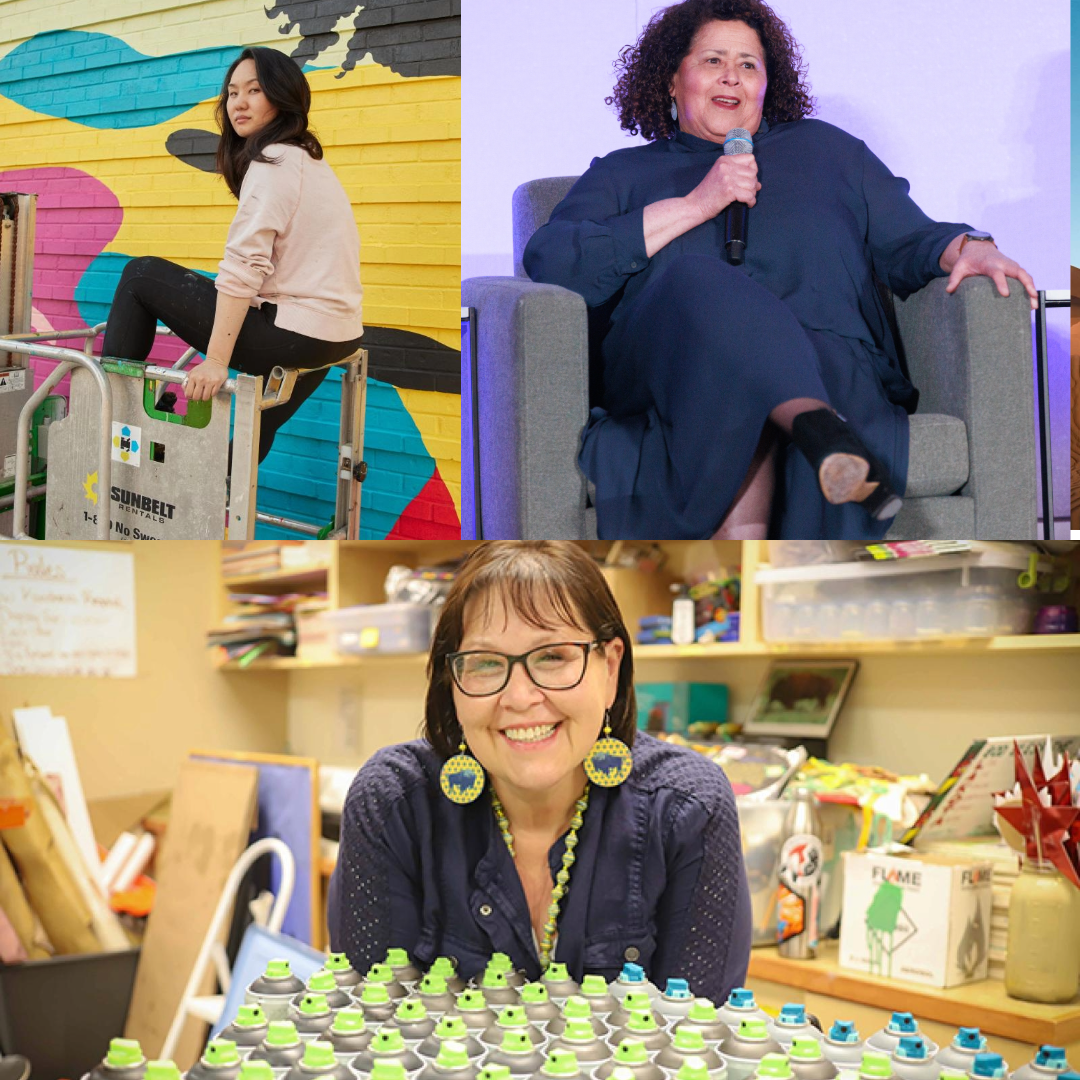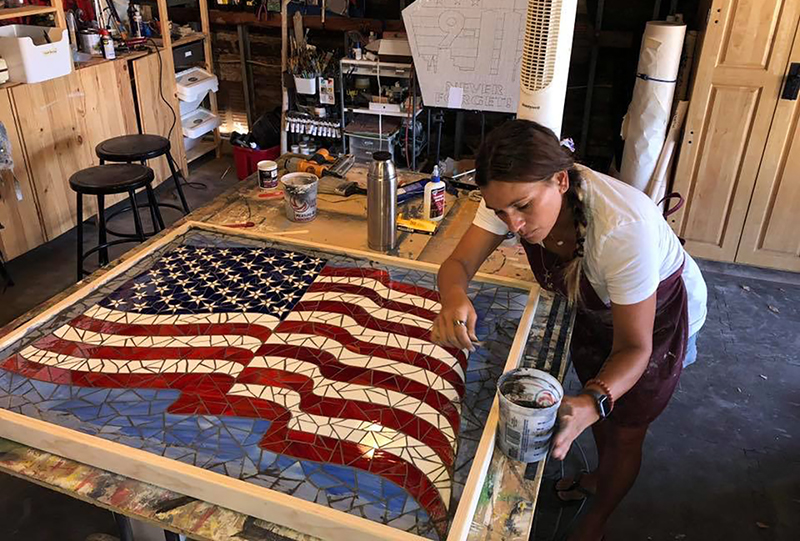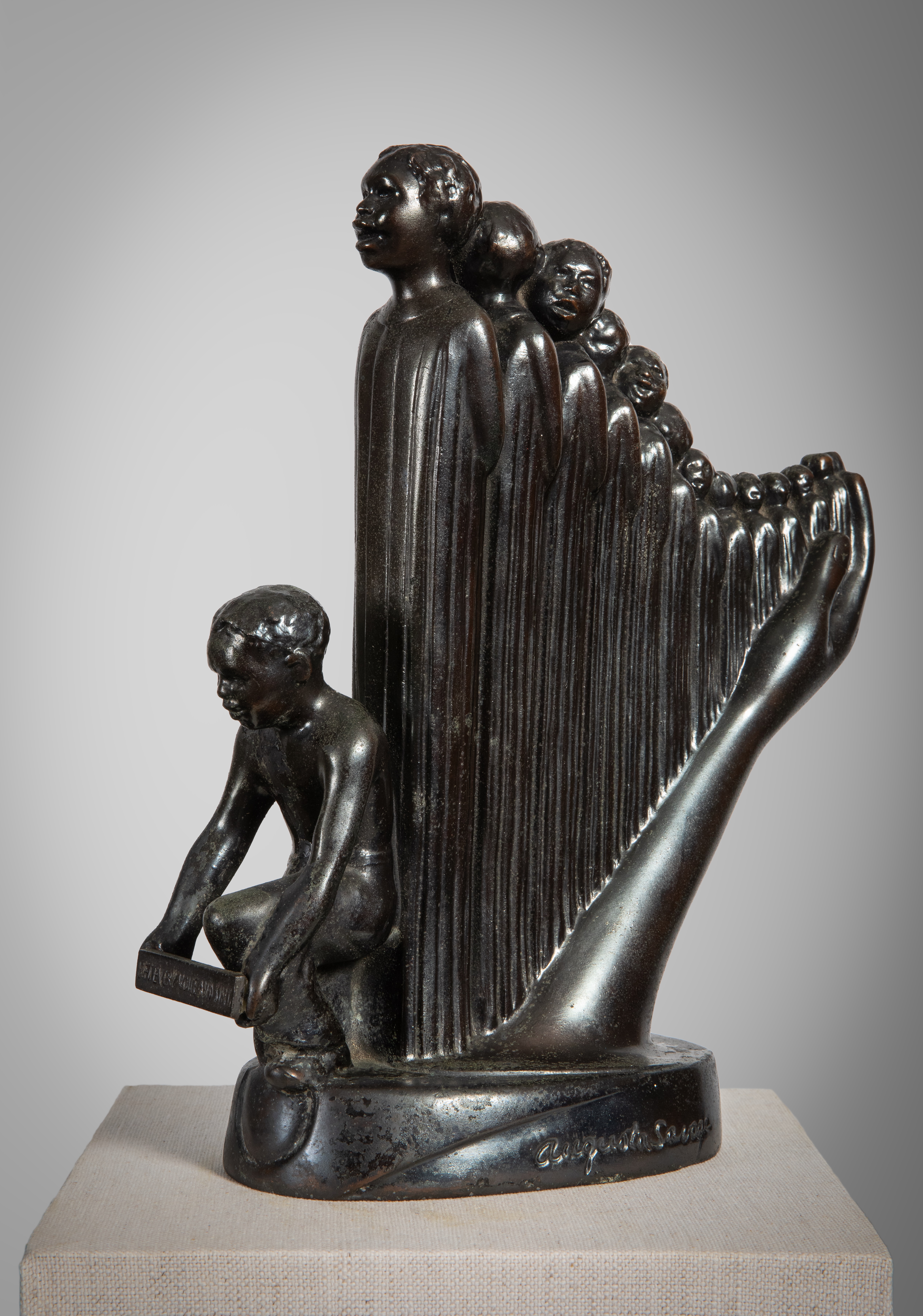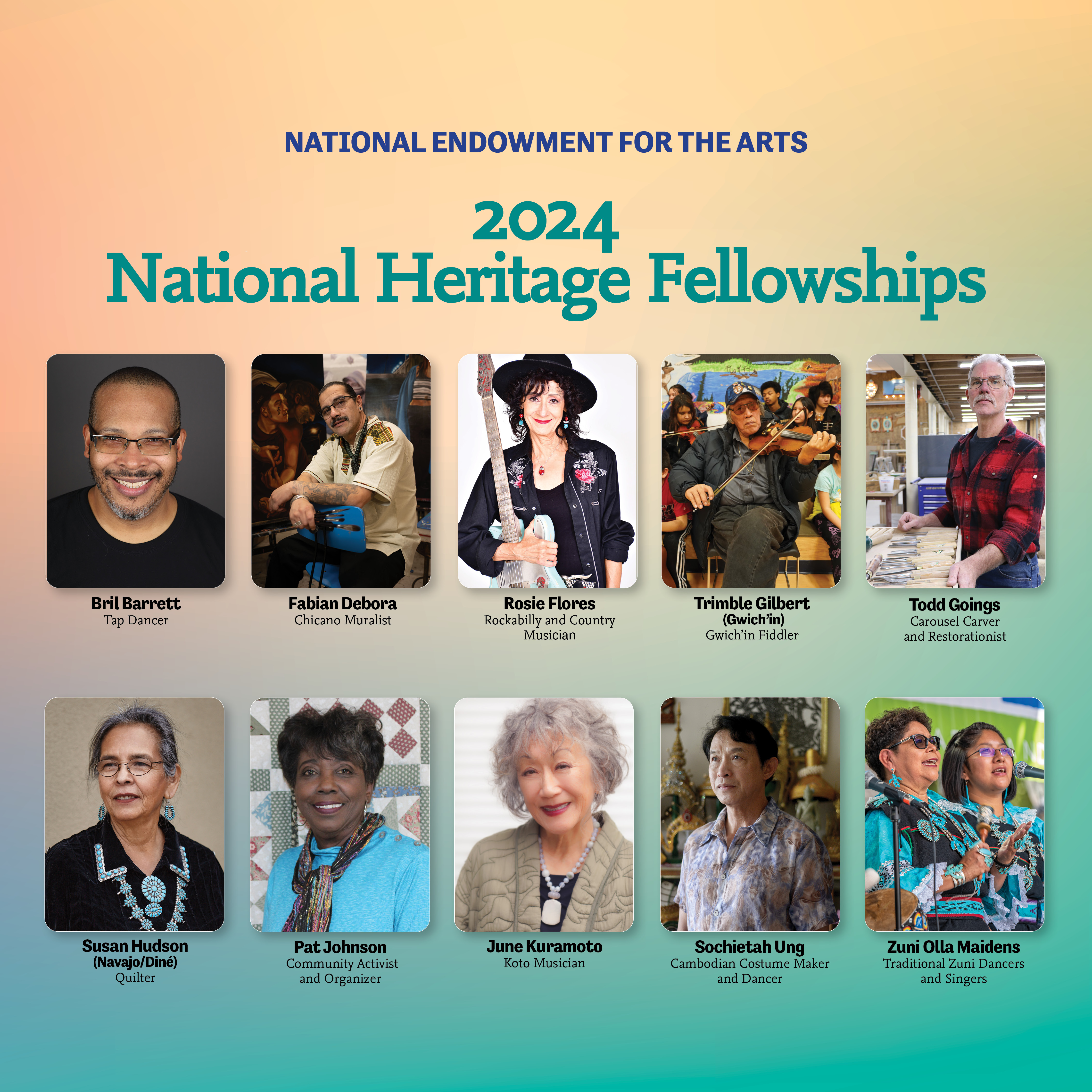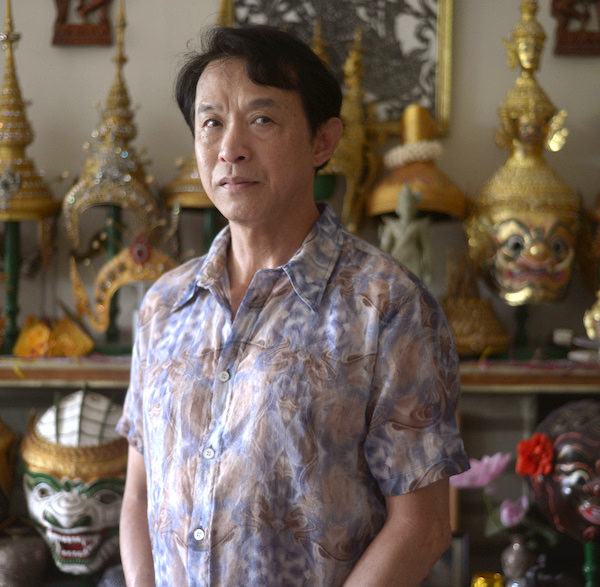Music Credit: “NY” composed and performed by Kosta T from the cd Soul Sand, used courtesy of the Free Music Archive.
Jo Reed; From the National endowment for the Arts, this is Art Works, I’m Josephine Reed
Danielle Evans: This is the beginning of a story called "Happily Ever After." “When Lyssa was seven, her mother took her to see the movie where the mermaid wants legs, and when it ended, Lyssa shook her head and squinted to the prince and said, "Why would she leave her family for that," which for years contributed to the prevailing belief that she was sentimental or soft-hearted when in fact she just knew a bad trade when she saw one, the whole ocean for one man.”
Jo Reed: That is author and 2020 NEA Literature Fellow Danielle Evans reading from her collection, “The Office of Historical Corrections.
In 2010, Danielle Evans award-winning first collection of short stories Before You Suffocate Your Fool Self dealt wittingly and incisively with issues of race, class and coming of age. Critics took note and settled in to wait for the next book…it arrived ten years later in 2020 and it was well-worth the wait. The Office of Historical Corrections which received well-deserved glowing reviews across the board, consists of short stories and a novella. And I thought the start of Women’s History Month would be a good time to revisit my conversation with Danielle about her book whose stories are informed by race, history, memory, and grief. How do you make things right—either personally or collectively? Who gets that second chance? How do you find a past that’s been erased? Those are some of the questions animating Danielle’s writing; and, she comes at these questions with sensitivity and curiosity through different characters and circumstances so the answers multiply throughout the book. Her craft—the artfulness of her writing—is mesmerizing. Each story a fully-realized journey with no easy answers-- only complicated questions in a beautifully cohesive collection that was a genuine pleasure to reread. Here’s my 2021 conversation with Danielle Evans
Jo Reed: Danielle, your collection The Office of Historical Corrections begins with the mermaid who leaves the sea, and it ends with a novella that deals with passing and returns to that that question, “Why would she leave her family for that?” I'm not sure that the final story answers that question, but, boy, does it bring it back home. It's such a cohesive collection. Was that your intention from the beginning?
Danielle Evans: Thank you so much. I think as a writer that I try to have intention around the middle of the process, so I rarely have any intention for anything at the beginning, and I think that's healthy. I think because if you try too soon to kind of force a theme or a connection, sometimes you kill the work, right? I tell my students like you institute a draft sometimes like you would an infant, right? Like if you see somebody screaming at a baby, it's just incredible depressing, because all you do with a baby is keep it alive, right? And so I think that there's-- like every project has an infancy, right? Every project has a version of itself where your job is just to keep it alive long enough to understand what it is and give it some roles. And so, yeah, I think that I wrote the first drafts of a lot of these stories not in the order they appear in the book, and not with a sense of what I was writing toward. And occasionally, when I'd get a couple of stories, I'd think, "Oh, this is what I'm writing about. This is what this new collection is." And all of those things turned out to be wrong until I was about three-quarters done. And at that point, I had written the story that opens the book. And I wrote something that kind of crystallized for me what I thought were the recurring questions and that made it easier to revise the things I was still working on. It made it easier to decide what the order of the book should be. But there was a lot of intentionality in terms of where the book opened and where it ended, and I do think that in a collection, you want to sort of open with a story that puts front and center as many of the recurring questions of the book as possible, and then all those questions will kind of come up in ways that hopefully give you different answers, or complicate the questions. So, the final story often does circle back to the questions you raised at the opening and I think gives you the experience of having moved through the whole book even as the stories are their own separate experiences.
Jo Reed: Well, what are the recurring questions that come up through the book for you as the author?
Danielle Evans: Well, certainly the question of history, both family history and national history and how we are shaped by the stories we tell ourselves about both. That's a question that comes up in a lot. And relatedly, the question of kind of who history belongs to, who records belong to, what happens when something about the recorder of known history of something feels like an erasure? How do you take ownership of a story that hasn't centered you? But there's also a recurring question of grief and loss of agency. And I think several of the stories are kind of playful about who this story belongs to and kind of start with a narrative that feels familiar and put some pressure on it. I think I'm always in everything I write interested in the gulf between our internal lives and our exterior lives, and so I'm always thinking a lot about interiority and interiority as a question about power, right? Interiority sometimes is the question about if any two people are on the page, which of them has to perform for the other one and why, and sometimes that's a personal answer. Sometimes it's a structural answer. And so I think in this collection that question about interiority is often mapped onto that question about history as a kind of performance. Kind of whose version of history do you have to perform? What version of yourself do you have to perform?
Jo Reed: Yes. And I also think you said this, but the way I also thought about it in my head was who gets to remain unconscious both personally and collectively, and who has to be very conscious of who they are every minute? I think that's a theme that goes through the book too.
Danielle Evans: And I think that's a fundamental question of character. And so sometimes that feels like a really abstract or structural question, but I mean I sometimes do exercises with my students where I just ask them to imagine asking like five different kinds of characters for directions from point A to point B. And who assumes you have a car? Who assumes you're taking the bus? Who assumes you're walking? Who thinks about whether the streets are lit? Who sends you through one neighborhood because it's safer and who sends you through it's a different neighborhood because they think it's safer, right? What kinds of considerations do we make about space that are just about our lived experience and physical embodiment even in things that seem concrete? And so I think that can sound like a really abstract thing to think about, like power relationships between characters, but it's how we experience the world.
Jo Reed: Yeah. Oh, no, I completely agree. And in the first story, "Happily Ever After," we see Lyssa nursed her mother through her final illness, and what she did, dressing very, very well in clothing she really couldn't afford, her hair always done, make up perfect when she was at the hospital so the doctors would see her and by extension her mother as human beings, as people worthy of care.
Danielle Evans: Yeah. I mean, I think that's a very concrete, tangible example of that kind of thing. And I think a think that-- if you're from a class background or a racial background where you expect to be discriminated against in certain spaces, a routine you're really familiar with, and maybe if you expect to walk into a place and be treated nicely, you're not as familiar with what you may do to try to earn that treatment.
Jo Reed: Right. Well, let me just say this on the outset. I am not somebody who gravitates towards short stories. I'm much more of a big novel kind of person, but the short stories I love. Man, do I love them. And I loved yours.
Danielle Evans: Oh, thank you so much.
Jo Reed: They were so vivid, so complete, left me wanting-- just wanting more, and I don't mean, "Oh, they should have been longer," though I really would have loved it, of course, if they had been. But just the curiosity I had about these characters and what happened to them when they weren't on the page with me anymore. I really felt very concerned about all of them and had so many questions, so thank you.
Danielle Evans: Thank you. One of my favorite things that short stories do when they're working, which is I think moved through time in this way that feels really seamless. Like there's some sort of present crisis that you're being directed to that's creating some kind of moment or occasion for the story, but there's also so much history, some nods to the future, and there's just this sort of way that time compresses so you can be in the past, present, future at once. And I think when a story captures that, it feels a lot like being alive feels, and that's when I'm often most in love with short fiction. I don't dislike novels. I think people sometimes get mad at me, because I talk about short stories all the time. I love novels. In fact, I love big, messy novels.
Jo Reed: Me too.
Danielle Evans: And I kind of feel like if a novel isn't like spiraling that I just want to compress it. I either want like 20 characters in a span of several generations, or I want a short story.
Jo Reed: Yes. I completely understand that. And I also like both your books have stories that deal with friendship in a very complicated way. Your first book is, Before You Suffocate Your Own Fool Self, and the last story, "Robert E. Lee is Dead." is a wonderful exploration about young friendship in all its messy complexities? And friendship is a subject that always interests me.
Danielle Evans: Yeah, and I think friendship is really interesting from a plot perspective, because friendship is a choice you have to make over and over again, right? Like you can end a friendship without any particular drama. That doesn't mean there can't be drama in the ending of a friendship, but you can end a friendship just by deciding you're not someone's friend anymore in many cases. And so it's interesting to me in that it's a choice we often make over and over again at completely different times of our lives, and so it creates some inherent rhyming action, because like what's the difference between the you that chose somebody as a friend a long time ago and the you that chose to continue that friendship as an adult. What's the sort of difference between the moment that you chose that friendship even as an adult and the moment that you stopped? And it creates, I think, a really rich territory, because it is so much about agency. Kind of once you're in a familial relationship or a romantic relationship there's often some entanglement that requires like an action to get out of, right?
Jo Reed: Absolutely.
Danielle Evans: But for instance, you can get out of through passivity. And so I'm interested in that. I'm interested in what it tells us about characters in terms of who makes the active choice to end a friendship and who makes a passive choice and who continues to choose the same thing in spite of the ways in which people become different over the course of their lifetime.
Jo Reed: We talked earlier about so many of the Black women in your stories and indeed the world who have to be very conscious about the way they represent themselves and that's in stark contrast to Claire, a character in the story “Boys Go to Jupiter,” and she’s a white college student who heedlessly wears a confederate flag bikini, which goes online and goes viral.
Danielle Evans: Yeah. I mean, you know, it's funny. A lot of people kept asking like, "Did you write this story to be topical," and it was like, no. I wrote this story because I grew up in Northern Virginia and I've been thinking about this all of my life, about kind of what we do with these symbols that often exist detached for some people from their political reality, but sort of that context is always there to be accessed. And so I think about this story maybe three different ways. One is that I'm interested in writing stories that think about race that are not just kind of performing some version of the trauma of racism. I think that sometimes the access point that those stories create, it's sort of traumatizing readers who recognize the experience and allowing readers who don't recognize themselves as racists to just kind of disassociate, you know, to feel empathy for whoever is being harmed in the story, but to not think about their own role in it. And so I wanted a story that felt like it complicated that. I wanted to write a story where in order for it to work, there had to be moments when you did see this character as somebody-- you see this character as she saw herself, right, not as a villain, as a kind of grieving, confused teenager, but also to see the harm she's doing in the world and also to see the failure to learn from it. And also to, in some ways, play with our instinct for empathy so it starts to feel like a familiar kind of story, but then the juncture is where you sort of want to say, "Oh, this character is complicated. Let me forgive her." If you say that, I think eventually you reach a point in the story where you think maybe I shouldn't have done that. And so I wanted a story where I could write about racism and privilege, but the character wouldn't be such a caricature or even such a committed explicit racist that people could refuse to identify with her. I wanted the murkiness of thinking about that impulse to absolve her if it happened.
Jo Reed: Well, it's so interesting, because she's fueled by grief and loss, which she's running away from and pushing away. And to me it just seemed like such a parallel to her deliberate inability to look at the larger history, our collective history and that same pushing away. She gets to just think about her little self. She doesn't have to think about anybody else. It's quite the opposite of that presentation that most of the other women in that collection have to be very conscious of all the time.
Danielle Evans: Yeah. You know, when I started writing that story, when I got a few pages into the draft, I looked back and I said, "Oh, no, I've made a mistake. I've written the whole thing in present tense." And then I thought, "No, I think that may not be a mistake. Let me go with it and see where it gets me," and it felt like the right choice for both of those reasons, right, that one of the effects of grief can sometimes be to freeze you in the moment of grief. But I also think that the present tense is a way of thinking about her relationship to history, right? Who gets to exist outside of history? Who gets to say like, "Well, only the present is happening, and so it doesn't matter what I've done before. It doesn't matter kind of like what legacy I'm invoking. This is now," and I think that there's a sort of interesting relationship between the present tense of grief, which humanizes her and the present tense of kind of a historical privilege, which is part of what lets her get away with doing harm and reinventing herself.
Jo Reed: Yes. And then, of course, it has this, I don't know, thread of the whole public apology thing and accountability that the story is also interrogating as does the other story in the collection, "Why Won't Women Say What They Want," where you really take the public apology and you go to town with that one.
Danielle Evans: Yeah. You know, I mean, that story--even though in some ways it may feel different than the other work in the book-- it was a story I wrote that sort of clicked into place for me what the collection was about, and I was like, "Oh. Okay. This is what I've written. This is what these stories keep asking in generally more subtle ways than in that story," but, yeah. I mean, it sort of starts with what feels like, I think, a really familiar narrative of somebody who's publicly being kind of called out for being not a great guy and starts to apologize, and it's already a little over the top, and I think it just gets kind of weirder and weirder and puts more pressure on that story as it continues and also allows other people to break in so I think that by the end of the story, it sort of less and less belongs to the man that it centered on. And I think that's what I was most interested in, right? I think an apology narrative is always the story of the person who's done some harm. An apology narrative, even if it's a sincere one, always belongs to the person who like did something bad and grew from it, right? And so that may or may not have the same story shape as the people who knew you before you decided to be a better human, right?
Jo Reed: You got that right.
Danielle Evans: They have their own versions of their lives in which maybe their encounter with you was a non-event and because they just decided you're a terrible person and it didn't bother them, but maybe it was also something traumatic that sort of derailed whatever path they were on and reshaped their whole life. And so your growth or lack thereof in the time after that may or may not have impact on those people. And so part of what I wanted to think about is kind of where you let that story fragment to let the other stories come in and kind of give it loose ends and be messier and less contained. And I also was interested in this question of, which I think I'm interested in throughout the book, competing desires, right, that we often do want to live in a world where we make it possible for people to have second chances and to not be stuck being the worst versions of themselves forever. Who gets those second chances and whose work is it to pay for them if we get it wrong, you know?
Jo Reed: Well, let’s turn to the novella, the title story, "The Office of Historical Corrections.” I love that concept—an agency you created that corrects “the contemporary crisis of truth.” Just call 311, which is kind of fabulous. Where did this idea come from?
Danielle Evans: Yeah, yeah. I think originally it was a joke that I would tell. Years ago I was on Metro-- I can’t-- I wish I remembered. But someone was having some wildly inaccurate conversation on the Metro. I want to say they were talking about the Haitian Revolution, but I can’t remember what they said. I just <laughs> sort of got off the train and I joked and I think I texted somebody and said, you know, “I would pay like five extra tax dollars a year to, like, crowdfund an agency that could just sort of correct people <laughs> on history, on kind of verifiable history. Just like fact check them in real-time,” and of course, like, I wouldn’t actually want that to happen.
<laughter>
Danielle Evans: It would be terrifying if everybody’s just minding their business having a conversation and somebody came up to you and was like, “In fact, <laughs> you’re wrong,” but...
Jo Reed: <laughs>
Danielle Evans: And also, I think, you know, we can see in this climate it would probably be, although there is hostility aimed at them in the novel, I think it would even be kind of more impossible <laughs> than perhaps the novella makes it out to be.
Jo Reed: <laughs>
Danielle Evans: The novella’s imagining a sort of slightly calmer time, I think, than our present, <laughs> but... But I was interested in that sort of question of what we might do with a kind of-- I think at some point it’s described as an NIH for a different kind of public health crisis, right. Like, what we would do as a country to be committed to accuracy, and where the tension points in that decision would be, because inherently in any kind of institution there’re people who have different understandings of the mission, there are people who have different understandings of what it means to be accurate about U.S. history. So I was also interested in sort of thinking through the tensions, and it let me turn my historian into detective, and I’ve always loved a good mystery, and so I said, “Well, what if I just tried to flesh out this agency and think about kind of where the problems and tensions and crises would be and where this character who has kind of noble intentions would run into trouble?”
Jo Reed: And that character is Cassie, and she and her friend/nemesis Genie who she’s known almost her entire life, they end up at the Office of Historical Corrections and they investigate the death of a Black man in rural Wisconsin. It does unfold like mystery so I don’t want to talk about the specifics of the plot. But I do want you to tell us about Cassie and Genie… Who are they and how are they tied to each other?
Danielle Evans: Yeah. They meet when Cassie, who is accepted to the private school at which Genie has previously been the only Black student in their grade, and so have a kind of fraught relationship in which they can’t really be enemies because their circumstances and their parents kind of insist <laughs> that they not be enemies, but also aren’t really friends, <laughs> right, and so it’s a sort of interesting dynamic and then they keep reappearing in each other’s lives in various ways and when they’re younger Genie is being raised in a house where her parents are kind of wealthier, are more established. She is being raised to embrace respectability politics, and so she is the kind of model student and Cassie is comparatively a little bit kind of wilder or brattier, and so the interesting thing from a character development perspective is that when they sort of arrive at the present action of the novella they’re kind of almost in inverse places, right, that Genie has walked away from or been pushed out of this life that felt completely like what she was being trained for all her life and has become someone who’s very outspoken and doesn’t fit into the institution because she’s so outspoken, whereas Cassie has become this person who’s sort of learned to play the game and convinced herself that it’s in the best interest of the larger work for her to kind of figure out a way to get along even if it’s not exactly what she means or she can’t always do exactly what she wants. That she has enough independence to make a difference, as long as she kind of gets along with everybody. And so I’m interested in this because I do think that those are often the choices you have if you’re a marginalized person in a system that isn’t set up for you, <laughs> and I’m interested in thinking about not just that these choices exist in opposition in different characters, but they often exist in opposition in the same person, right.
Jo Reed: We touched on this earlier… I know you’re working on a novel, so I’m not trying to pigeon-hole you but I’d like you to talk a bit more about short stories—and what they allow you to do as a writer that perhaps a novel doesn’t…or what they require from you as you write.
Danielle Evans: Yeah. I love the short story in part because of-- I talked a little bit about timing compression earlier, but I also think that the short story lets you tell lots of different stories. You know, I think especially with my first book when I was an unknown debut writer, who wrote a lot in first-person, which I think was more true in my first book than this book, although there is still some first-person in it. I was worried about being penned down. You know, I was worried about the way that people tend to read sometimes debut work in general, I think especially work by women or writers of color, right, they tend to read it for sociological value sometimes, <laughs> or sometimes they’re taught it as a sociological value instead of sort of from a craft perspective, and so I think one of the things that’s great about a story collection is that you see a writer doing lots of different things and it makes it harder to read it like an essay and say, “Oh, this is a book that has an argument that we should do--” XYZ thing or, “This is a book in which this character is clearly a stand-in for the writer, although I am very much a writer who believes that everything you write is somewhat autobiographical, right, that there is some version of ourselves in every character we write. I think when you have enough characters who are not the same people, it makes it harder for somebody to sort of aggressively read it that way, and so I like the conversation that forces. I like being able to answer the same question in different ways. I like being able to, I feel like, sometimes escape the trap of being read as a sociologist or even a historian and not a fiction writer, <laughs> which is what I am.
Jo Reed: Yeah. It was interesting, because when I was reading your most recent collection, The Office of Historical Corrections, at a certain point I was just thinking about the short story and my relationship with it, and I was really appreciating the recurring questions, for example, that you had mentioned that go through the collection, the threads, and it was very interesting seeing these questions from being examined in different time frames from different perspectives with different people and different circumstances, and there was a lot I valued about that.
Danielle Evans: Yeah. Thank you. It’s one of my favorite things about story collections, as a reader, is just to kind of see a theme shapeshift.
Jo Reed: Now, it was 10 years between your first collection and your second, and I’m just wondering as we’re looking at structural inequity and racial inequality throughout American life including the arts, maybe even especially the arts. What have you seen change in publishing? Have you seen change and what do you see on the road ahead?
Danielle Evans: Yeah. I’ve said before <laughs> that I think the problem of the 21st Century is that like the gates are opening as the building’s collapsing, <laughs> so, like...I think sometimes my question about all of our initiatives <laughs> is like, “But what are we going to do with the actual systems we’re bringing people into that are not sustainable?” I do think, yes, things have gotten better. I think when my first book came out we were still at the end of the period where there’d be sort of like everyone would put, like, one writer of color in the list a year and if you talk to people who worked publishing, then they’ll say that. That was explicit, right. The idea was like you couldn’t sell more than kind of one big book by a writer of color every season, and certainly that’s not true in the same way that it was now in that, you know, you have the delight of putting lots of writers in conversation, of having multiple books in the same cycle getting attention, and that, again, takes some pressure off of the idea that, like, this is the one story or this is the one voice. At the same time, I mean, I think even having said that, you know, there was a recent article about publishing that said, you know, I think they stopped in 2018, but said that 95 percent or something-- something astonishingly high. I think it really was 95 percent of the books being published are still by white writers, so...
Jo Reed: Yes, according to an article in the New York Times, in 2018 alone 89% of the people published were in white. The 95% figure comes from writers published between 1950 and 2018…so….
Danielle Evans: So, I mean, you know, take progress with a grain of salt. <laughs> I do think there’s progress in the way that’s been meaningful to me as a writer, because I didn’t feel as much like I would be the only writer someone was reading or the only writer on somebody’s syllabus, and so I think there are some weird or more experimental things in this collection that I felt more at liberty to do without feeling like there was going to be some way in which they were taken as representative. So I think that it’s a better moment but not one that sort of feels so solid that it’s fixed the problem, both because sort of we haven’t made enough progress on the diversity and because we’re diversifying an industry that hasn’t figured out how to sustain itself <laughs> long-term necessarily, so... A lot of industries, I should say. It’s not just publishing, but it’s also reviewing and, you know, the arts in general and-- and I do think that for as much as people fuss about MFA programs, and I do understand, like, some of that, but I do think that some of that pressure to diversify started in those programs, which diversified before publishing did. I mean, not much before. I don’t want to give places too much credit, but <laughs> I think that, you know, if you look at some of the major workshops right now, there are not any more spaces where you have one writer of color going through the program alone and then coming out and publishing alone, <laughs> right. They’re places where people are in conversation. Sometimes in argument, you know, doing very different things as young writers of color, and I think that’s healthy. I also, you know, is academia more sustainable than publishing? Who can say at this point? Like, <laughs> who can say what will collapse first? I have not turned into Pollyanna, but I am grateful to be publishing and writing and reading in a time where I can think of, you know, five or six great story collections by just-- even just Black writers in last couple of years that got a lot of attention, and I think that’s healthy.
Jo Reed: You were also an NEA Literature Fellow. What did that allow you do?
Danielle Evans: I was. Well, right before everything shut down I was able to take a research trip to L.A., to do some research for the thing that I’m working on now. I’ve decided the one lesson I’ve learned as a writer is to talk a little bit less about your work in progress. So I’m keeping it kind of close to the vest, but part of it happens in L.A. and I’d never been, so I was able to go and kind of do some research and also think some about the sort of landscape of the book. I think that so much of writing is about physical space, and so it’s hard to write a place you haven’t seen, <laughs> and it also just gave me some time to kind of focus on that new project without the pressure to finish it quickly, and so I’ve had some time to sort of sit with it, which has been very helpful, to kind of feel that I could work at the pace the work needed. Hopefully not another 10 years, but <laughs> slow enough that what I-- when I finish with it it will feel like what I meant to finish.
Jo Reed: Well, I’m going to leave it there because, of course, my last question was going to be, “What are you working on?”
Danielle Evans: <laughs> Right.
Jo Reed: You’ve just answered it as much as you want to, and that’s fine.
<laughter>
Danielle Evans: I cheated.
Jo Reed: Danielle, thank you. It was really such a pleasure to talk to you. Thank you for giving me your time, and thank you for writing those two books.
Danielle Evans: Thank you. Thank you so much for reading them and for talking to me.
Jo Reed: That was writer and NEA Literature Fellow Danielle Evans—Her two collections of stories are The Office of Historical Corrections and Before You Suffocate Your Fool Self.
You’ve been listening to Art Works, produced at the National Endowment for the Arts. Follow us wherever you get your podcasts and don’t forget to leave us a rating on Apple. For the National Endowment for the Arts, I’m Josephine Reed. Thanks for listening.
